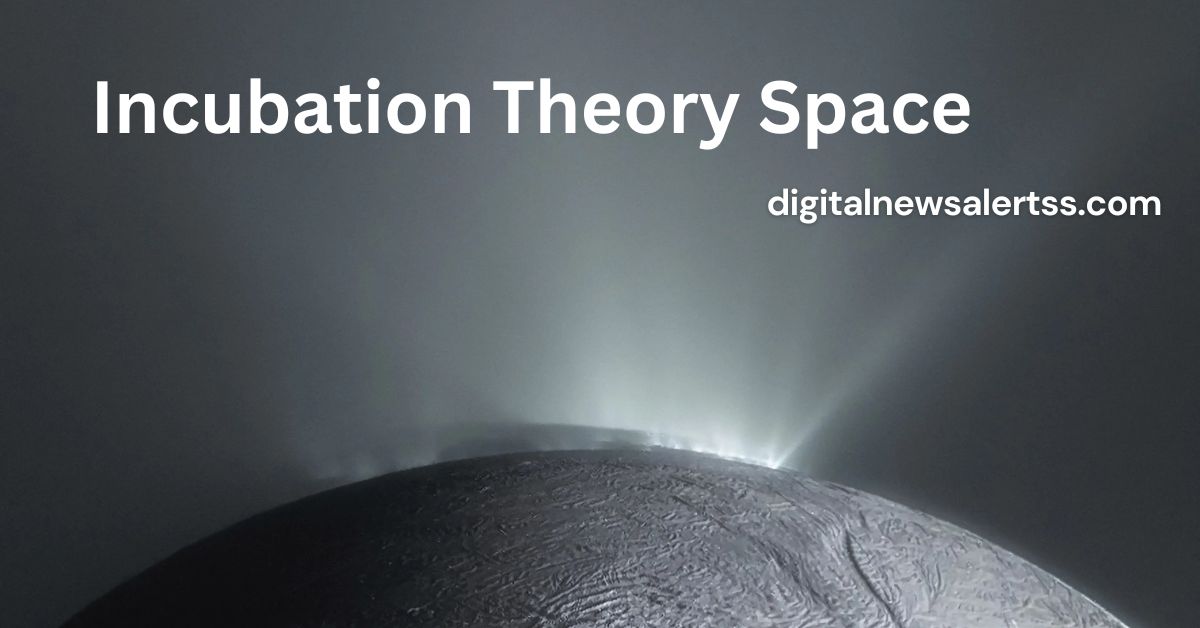In a world that constantly demands fast problem-solving and instant creativity, we often forget that sometimes the best ideas come when we’re not actively working on them. The concept of the “incubation theory space” offers a fresh perspective on how our brains work behind the scenes, nurturing ideas even when we are consciously focused on something else.
The incubation theory space refers to the cognitive space where ideas are formed, refined, and matured without direct conscious effort. This theory suggests that taking a break, shifting focus, or even sleeping on a problem can lead to creative breakthroughs. Let’s explore how the incubation theory space works, how it can benefit us, and why understanding it could be the key to solving many of life’s challenges.
What is the Incubation Theory Space?
The incubation theory is based on the idea that our brains continue to process information and solve problems even when we’re not actively thinking about them. When you step away from a problem or take a break from focused work, the subconscious mind kicks in, making connections and working in the background.
Incubation theory space refers to the mental and emotional space where this subconscious problem-solving happens. During this time, the brain relaxes, reducing mental pressure and creating an optimal environment for creative thought. This is why people often experience “lightbulb” moments after stepping away from their tasks.
Example of Incubation Theory Space in Action
Consider a time when you couldn’t find a solution to a problem, no matter how hard you thought about it. You took a walk, watched a movie, or simply slept, and then suddenly, the solution popped into your head. That’s the power of the incubation theory space at work.
How Does the Incubation Theory Space Work?
Incubation theory space relies on two core principles: cognitive relaxation and background processing.
- Cognitive Relaxation: This is the first step in entering the incubation theory space. By consciously diverting your attention away from the problem, you allow your mind to relax. This relaxation reduces mental barriers, such as stress and overthinking, that often block creativity.
- Background Processing: Once the mind is relaxed, the brain begins to process information in the background. While you’re occupied with other activities, the subconscious mind works through different angles, making connections between pieces of information you may not have considered during focused thinking.
These two principles allow the incubation theory space to foster creative thinking, problem-solving, and innovation without the constraints of focused, deliberate thought.
The Benefits of Using the Incubation Theory Space
Embracing the concept of the incubation theory space has several benefits for creativity, productivity, and overall mental health. Let’s dive into the specific advantages:
1. Boosts Creativity
The primary benefit of the incubation theory space is the enhancement of creative thinking. When you take a break, your brain explores uncharted territories, often leading to innovative solutions. Many of history’s greatest inventions and ideas came about during times when their creators were resting, daydreaming, or distracted by other activities.
2. Improves Problem-Solving
Often, when faced with a tough problem, focused thinking leads to stress and mental blockages. Incubation theory space allows the mind to approach problems from different angles without the limitations of stress or over-analysis. The result is often a clearer path to the solution.
3. Reduces Stress and Mental Fatigue
Constant focus and pressure to solve problems can lead to mental fatigue and stress. Incubation offers a mental break, allowing the brain to recharge and reducing overall stress levels. This is particularly important for long-term productivity and mental health.
4. Promotes Better Decision-Making
By giving your brain time to process information without forcing it, you can make better decisions. Instead of rushing into a choice, allowing some incubation time enables you to weigh your options more thoughtfully.
5. Enhances Learning and Memory Retention
When learning new information, stepping away and giving your mind time to process it in the incubation theory space can lead to better memory retention. The brain has a way of organizing information in a more meaningful way during breaks, which improves recall later on.
How to Apply the Incubation Theory Space in Everyday Life
While the incubation theory space happens naturally, there are several ways to optimize this process and intentionally leverage it to boost your creativity and problem-solving abilities.
1. Take Regular Breaks
Breaks are essential for incubating ideas. Stepping away from a task, even for a few minutes, allows your mind to rest and explore new possibilities. The key is not to force creativity but to allow it to happen in the background.
2. Engage in Different Activities
Switching tasks or engaging in unrelated activities can activate the incubation theory space. Physical activities like walking, exercising, or even cleaning can help stimulate creative thinking. Doing something enjoyable can also relax your mind and promote idea formation.
3. Get Enough Sleep
Sleep is one of the most powerful tools for incubation. During sleep, the brain processes information from the day, making connections and solving problems. Many people experience sudden insights or solutions upon waking, thanks to this overnight incubation period.
4. Practice Mindfulness and Meditation
Mindfulness and meditation help calm the mind and reduce stress, making it easier for the brain to enter the incubation theory space. By creating a peaceful mental environment, you increase the chances of creative breakthroughs.
5. Write Down Your Thoughts
Sometimes, solutions and ideas come at unexpected times. Keep a notebook or a notes app handy to capture these thoughts when they arise. This will allow you to track and further develop ideas that come out of the incubation space.
The Science Behind the Incubation Theory Space
Research supports the effectiveness of the incubation theory space in fostering creativity and problem-solving. Studies have shown that taking breaks and allowing the mind to wander improves creative output and leads to better performance on complex tasks.
One well-known study by psychologist Dr. S. M. Smith found that participants who took breaks from a challenging problem were more likely to solve it than those who worked continuously. This demonstrates that the brain works more efficiently when given the chance to incubate ideas.
The default mode network (DMN) in the brain plays a crucial role in the incubation process. This network is active when the mind is at rest or not focused on a specific task. It is responsible for background processing and often sparks creative insights.
Common Myths About Incubation Theory Space
There are several misconceptions about the incubation theory space. Let’s debunk some of these myths:
1. “Incubation is just procrastination.”
Many people confuse incubation with procrastination, but they are not the same. Procrastination involves delaying work, often with negative consequences, while incubation is an intentional mental break that allows ideas to form. It’s a productive use of downtime.
2. “You must work non-stop to solve problems.”
In reality, working non-stop can lead to mental exhaustion and hinder creativity. The incubation theory space shows that taking breaks and allowing time for reflection is a more effective way to solve problems.
3. “Creativity only happens when you focus.”
While focused work is important, some of the best creative ideas emerge during downtime. The incubation theory space highlights the importance of stepping away from work to unlock creativity.
FAQs About Incubation Theory Space
How long should I take a break for incubation?
The length of a break can vary. A short 5-10 minute break can be effective for minor tasks, while longer breaks or even a night’s sleep might be necessary for complex problems.
What activities work best for incubation?
Activities that relax the mind, such as walking, light exercise, or even simple household chores, can stimulate incubation. The key is to engage in something enjoyable that takes your mind off the problem.
Does incubation work for everyone?
While incubation theory space can benefit most people, the effectiveness may vary depending on individual cognitive styles and the complexity of the problem. However, taking breaks is universally helpful for reducing stress and enhancing focus.
Can incubation theory space improve my creativity at work?
Absolutely! By incorporating breaks, engaging in different activities, and creating a supportive environment for creative thinking, incubation theory space can lead to more innovative solutions at work.
Can I force an incubation period?
Incubation happens naturally, but you can create the conditions for it by stepping away from a task and engaging in relaxing activities. However, forcing creativity or stressing over results can hinder the incubation process.
Conclusion
The incubation theory space is a powerful concept that highlights the importance of taking breaks and allowing the mind to work in the background. By embracing this theory, you can boost creativity, solve problems more efficiently, and improve overall well-being. Whether you’re struggling with a challenging task or looking for new ideas, stepping away from focused work and entering the incubation theory space may be the key to unlocking your full potential.



